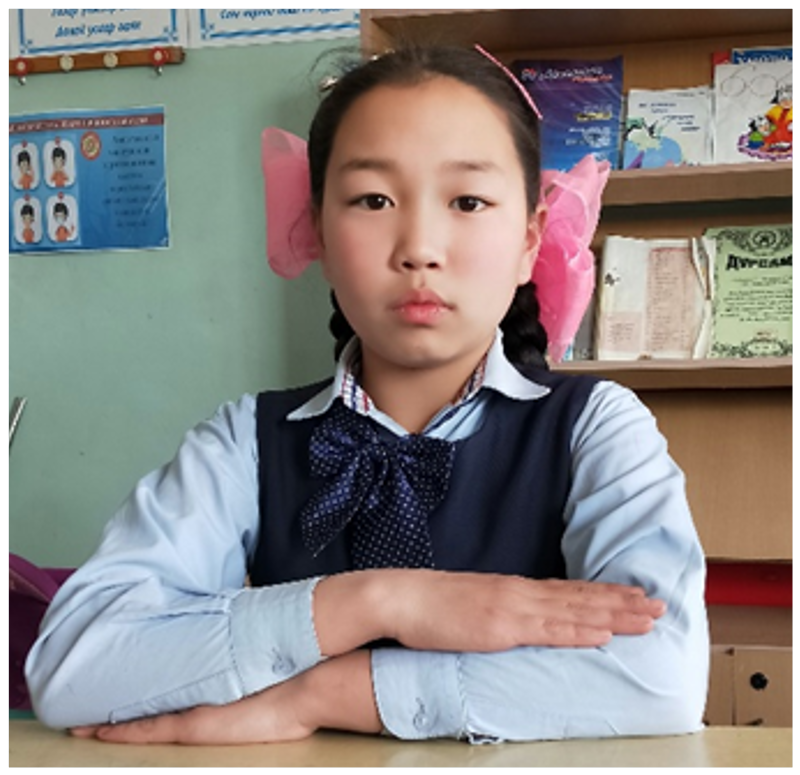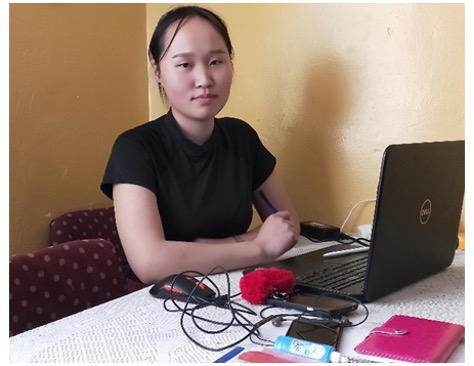‘It felt like the first day of school on September 1, when I came back to school on the 1st. March 1. It was great to be with my family, but I missed all the other students I live with at school, my classmates and my teachers. School is my second home,’ says Jamyanmydag, an 8th grade student at the school in Khashaat soum in Arkhangai aimag.
Duurenjargal, 5th grade student adds: ‘I was extremely bored at home during the lockdown. And I didn’t always understand lessons on TV, and I missed my classmates and my teachers’.
Over the past few weeks, we’ve received dozens of stories and photos from teachers and students around Mongolia. Schools reopened after almost 4 months of lockdown, with daily interaction with classmates and teachers replaced by TV lessons and family. There are several common experiences and themes, no matter which corner of Mongolia the stories come from. And they are not fundamentally different from what we have seen and heard about in Denmark.
Students have missed school. They’ve missed their friends. And teachers. Who have missed the students. Like everywhere else where schools closed due to the coronavirus, many students have struggled to keep up with the distance learning that was offered.
‘For me, the lockdown has had its pros and cons. We children and young people could stay safe and secure from the corona. However, those of us in the countryside don’t have access to the same TV and internet education as children and young people in the cities. We risk falling behind and failing the exams that give us access to our dream of going to university,’ says Tsovoo, a grade 11 student.

Jamyanmy Day, 8th grade

Dureenjargal, 5th grade

Tsovoo, 11th grade
In Mongolia, the Ministry of Education established TV education during the first lockdown just over a year ago. Teachers have done their best to stay in close contact with students. In urban areas, and provided the students are from families that can afford a computer and internet access, teachers have been able to supplement TV lessons with assignments, lessons and guidance via the internet.
Teachers in rural Mongolia don’t have that option, but stories from all areas where our project takes place show that teachers have used the phone extensively to maintain conversations with their students. Also with the children and young people who had to move back to their families on the steppes. Of course, when the school closes, so does the dietary department.
Nalgirmaa, a first grade teacher at Khashaat school explains:
‘During the lockdown, students had to watch TV lessons with their parents. Throughout the day, I contacted every student by phone, and students who have access to the internet could also find help and guidance in our Facebook group. Students without daily access to the internet then checked Facebook whenever they could. Out of 29 students, I had regular contact with 20 of them. Now we are back to school and we have to pick up all the students. We have 14 good readers, there are eight who are fairly literate, and then there are seven who are a bit behind. We also have a lot of catching up to do in math. But it’s going to be okay.

N. Nalgirmaa, Teacher, 1st grade
We have been particularly curious about the reopening of the schools in the project that also have a boarding department. As mentioned earlier in this newsletter, the project has two main objectives.
One is to develop home-based play-and-learn to support school readiness among five-year-old nomadic children who cannot attend kindergarten.
The second objective is to improve the educational and social environment in the boarding wards of village schools, which house many nomadic children who are too far away from school. There is a particular focus on improving conditions for the youngest learners.
That’s why we’ve received stories and lots of photos from the reopening of schools with boarding facilities. As you’ll see from the image cavalcade we’ve put together, there’s a massive focus on corona safety and making students feel at home.
As Jamyanmydag, an 8th grade student at the school in Khashaat says at the beginning of the article, the school is the nomadic children’s second home.
That’s why it’s also a guiding principle for the project that the schools’ boarding facilities should exude as much loving care and security as possible. The extent to which this happens will be closely monitored over the coming years, when hopefully the project can be fully unfolded without further shutdowns.



